Nerve Plant
- October 26, 2023
- 0 comment
The nerve plant, scientifically known as Fittonia, is a charming and visually striking houseplant that is prized for its stunning foliage. This tropical beauty is native to the rainforests of South America, where it thrives in the humid, low-light conditions of the forest floor.

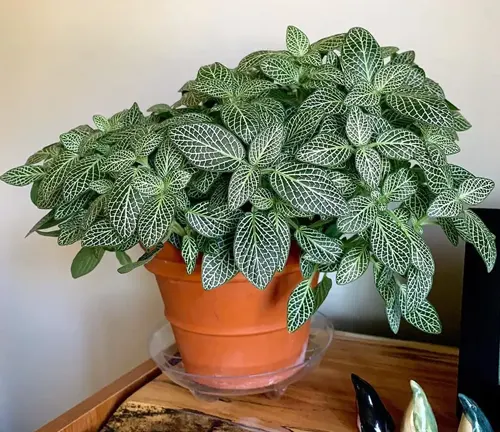
What sets the nerve plant apart are its delicate, veined leaves that come in various shades of green, pink, and white, creating an intricate mosaic of colors. This striking foliage makes it a popular choice for indoor gardening, as it adds a touch of vibrancy and character to any room.
Nerve plants are relatively easy to care for, requiring consistently moist soil and moderate to low light conditions. They are an excellent choice for terrariums, where they can add a lush, eye-catching element to the miniature ecosystem. With a little attention to its needs, the nerve plant can flourish and become a beautiful addition to your indoor garden.
| Characteristics | Description |
| Scientific Name | Fittonia spp. |
| Common Names | Nerve plant, mosaic plant |
| Family | Acanthaceae |
| Origin | South America (mainly Peru and Colombia) |
| Growth Habit | Low-growing, trailing, or creeping |
| Foliage | Small, elliptical leaves with prominent veins |
| Leaf Colors | Green, red, pink, or white, with various patterns |
| Mature Height | Typically 6-12 inches (15-30 cm) |
| Light Requirements | Low to medium indirect light; avoid direct sun |
| Temperature Range | 60-80°F (15-27°C) |
| Humidity Requirements | High humidity preferred (50% or more) |
| Soil Type | Well-draining, slightly acidic soil mix |
| Watering | Keep soil consistently moist but not soggy; avoid overwatering |
| Fertilization | Monthly during the growing season (spring and summer) |
| Propagation | Through stem cuttings or division |
| Toxicity | Non-toxic to humans and pets |
| Common Uses | Indoor houseplant, terrariums, hanging baskets |
| Maintenance | Prune to encourage bushier growth, mist leaves for added humidity |
Botanical Beauty of “Nerve Plant”
The Nerve plant, scientifically known as Fittonia, is a botanical gem that captivates with its exquisite beauty. This tropical houseplant, native to the lush rainforests of South America, stands out for its remarkable foliage. The Nerve plant boasts delicate, intricate leaves that feature striking veins and an array of colors, including shades of green, pink, and white. Its visual appeal and unique leaf patterns make it a favorite among indoor gardeners. But the Nerve plant is not just a pretty face; it has a vital role to play in the natural world.

Woodland Elegance
In its natural habitat on the forest floor of South American rainforests, the Nerve plant displays woodland elegance like no other. It thrives in the dappled, low-light conditions of the forest, where its vibrant leaves carpet the ground. The striking contrast between its colorful foliage and the dark forest floor creates an enchanting visual tapestry. This natural elegance makes the Nerve plant a captivating addition to any indoor garden or home.

Ecological Importance
Beyond its visual allure, the Nerve plant plays a crucial ecological role in its native environment. It contributes to the rainforest ecosystem by providing shelter for various small creatures and serving as a hiding place for tiny insects. Its roots help prevent soil erosion, stabilizing the forest floor. The Nerve plant is part of the intricate web of life in the rainforest, highlighting the interdependence of all living things in these vibrant ecosystems.
Cultivation and Conservation
Cultivating the Nerve plant as a houseplant is a delightful endeavor. With proper care and attention, it thrives in indoor environments. However, as with many rainforest plants, it’s essential to be mindful of conservation efforts. Many Nerve plant species face habitat loss due to deforestation. To protect these botanical treasures, it’s crucial to support sustainable plant sourcing and conservation initiatives, and perhaps even consider reforestation efforts.

Fragrance
The Nerve plant may not be known for its fragrance, but its lush presence adds a refreshing and natural aroma to indoor spaces. The oxygen released during photosynthesis and the humidity created around the plant can enhance air quality and provide a subtle, pleasing scent.
Soil Stabilization
One of the lesser-known but vital roles the Nerve plant plays in its native habitat is soil stabilization. Its intricate root system helps prevent soil erosion, particularly on the forest floor where conditions can be quite dynamic. This contribution aids in maintaining the structural integrity of the ecosystem, showcasing the plant’s multifaceted significance.
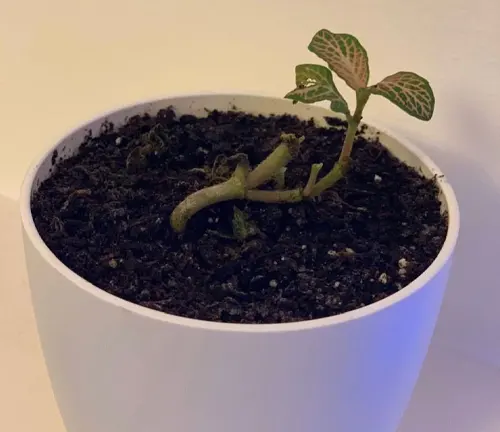
Common Uses
The Nerve plant is a versatile botanical wonder. It finds its place in various indoor gardening setups, from traditional potted plants to hanging baskets and terrariums. Its unique appearance and relatively low-light requirements make it an excellent choice for those who want to add a touch of nature to their homes, even in spaces with limited natural light.

Benefits
Apart from its aesthetic appeal, the Nerve plant offers several benefits. It can help improve indoor air quality by increasing humidity and purifying the air through the process of photosynthesis. The presence of indoor plants like the Nerve plant can also promote a sense of tranquility and well-being, enhancing the ambiance of your living spaces.
Different Species
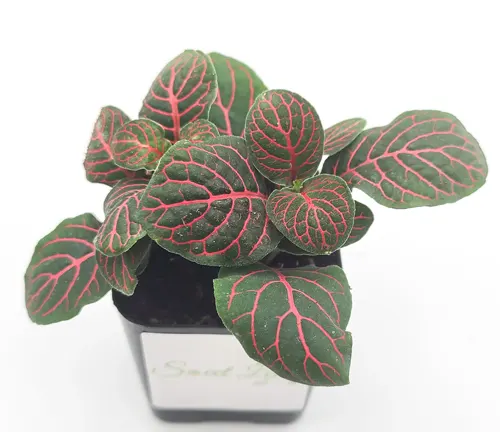
Fittonia verschaffeltii
This is the most widely recognized and cultivated species of Nerve plant. It has attractive green leaves with distinctive red or pink veins.

Fittonia argyroneura
Known for its silvery-white veins against dark green leaves, this variety adds a touch of elegance to indoor spaces.

Fittonia albivenis
This species features green leaves with white veins and is often referred to as the “Skeleton Nerve Plant.”
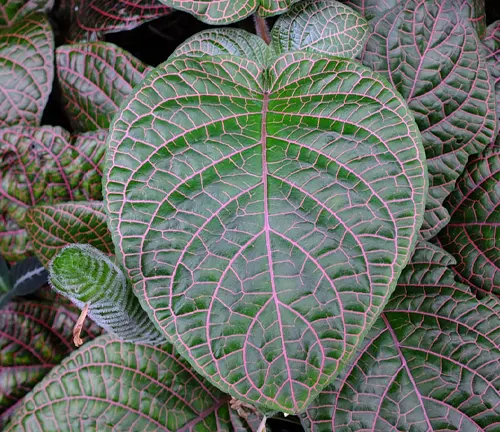
Fittonia gigantea
As the name suggests, this species tends to have larger leaves compared to other Fittonia varieties. It often features vibrant green foliage.
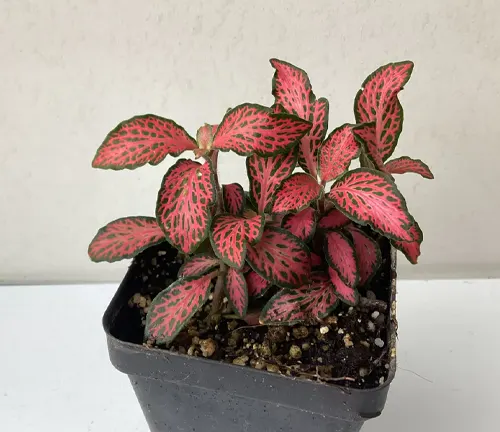
Fittonia ‘Red Anne’
This is a popular cultivar with bright green leaves and striking red veins. It’s known for its vibrant and eye-catching appearance.
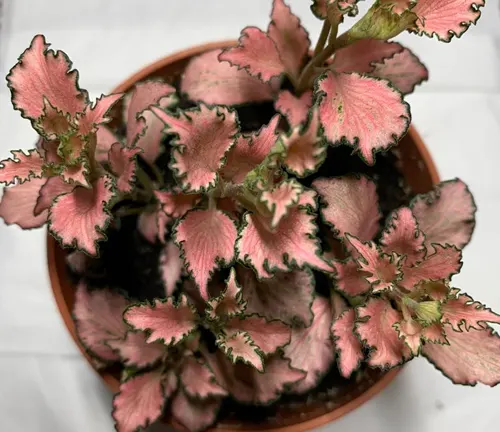
Fittonia ‘Frankie’
This variety showcases deep green leaves with contrasting white veins, creating a bold and visually appealing pattern.
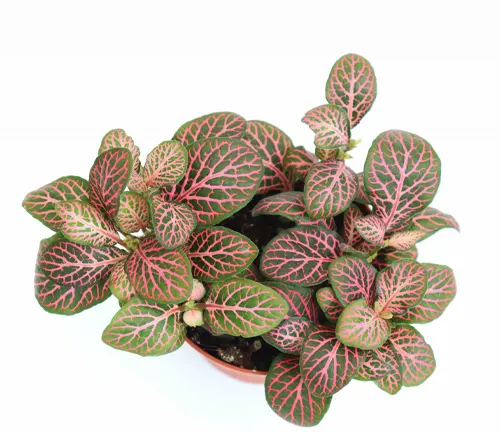
Fittonia ‘Pink Angel’
As the name implies, ‘Pink Angel’ boasts delicate pink veins on light green leaves, adding a soft and charming touch to indoor gardens.

Fittonia ‘Mini White‘
This is a dwarf variety with small, compact leaves adorned with white veins. It’s perfect for smaller indoor spaces.
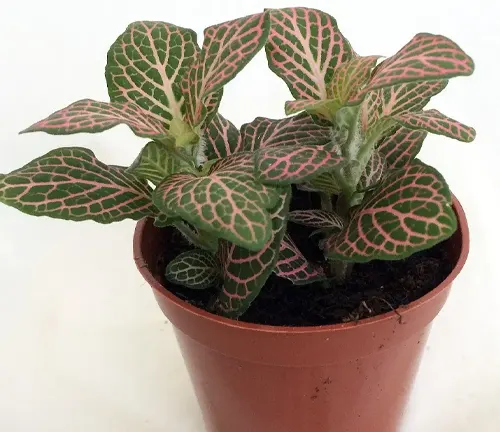
Fittonia ‘Juanita’
‘Juanita’ is recognized for its red-tinged leaves and striking contrast between the green and red coloration.
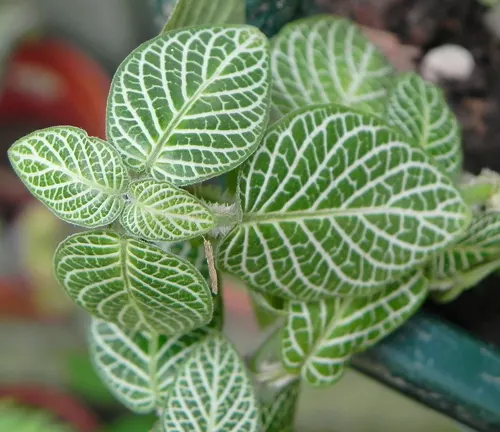
Fittonia ‘Nana
This miniature variety has tiny leaves and is ideal for terrariums and miniature garden arrangements.
Frequently Asked Questions (FAQs)
- What is a Nerve plant?
A Nerve plant, or Fittonia, is a tropical houseplant known for its colorful and intricate leaves. It’s a popular choice for indoor gardening. - How do I care for a Nerve plant?
Nerve plants thrive in moderate to low light, consistently moist soil, and high humidity. Avoid direct sunlight and overwatering. - Is the Nerve plant toxic to pets?
No, Nerve plants are non-toxic to cats and dogs, making them a safe choice for pet-friendly homes. - What are the common leaf colors of Nerve plants?
Nerve plants come in various leaf colors, including green, red, pink, white, and combinations of these colors, with distinctive vein patterns. - Can I grow Nerve plants in a terrarium?
Yes, Nerve plants are well-suited for terrariums due to their compact size and humidity requirements. - How often should I water my Nerve plant?
Water when the top inch of soil feels dry. Be mindful not to overwater, as they prefer consistently moist, but not soggy, soil. - What is the ideal temperature range for Nerve plants?
erve plants thrive in temperatures between 60-80°F (15-27°C). Avoid exposing them to drafts or extreme temperature fluctuations. - Can I fertilize my Nerve plant, and how often?
Yes, you can fertilize Nerve plants monthly during the growing season (spring and summer) with a balanced houseplant fertilizer. - How can I propagate my Nerve plant?
Nerve plants can be propagated through stem cuttings. Simply cut a healthy stem below a leaf node and place it in water or soil. - Why are the leaves of my Nerve plant turning brown or yellow?
Brown or yellow leaves can be a sign of overwatering, underwatering, or exposure to direct sunlight. Adjust your care routine accordingly. - Is the Nerve plant suitable for low-light conditions?
Yes, Nerve plants can tolerate low-light environments, but they will thrive and exhibit more vibrant colors with moderate, indirect light. - How can I increase humidity for my Nerve plant?
You can increase humidity by misting the plant, using a humidity tray, or placing a humidifier nearby. - What are the benefits of having a Nerve plant in my home?
Nerve plants improve indoor air quality by releasing oxygen and adding humidity. They also enhance the aesthetic appeal of your living space.


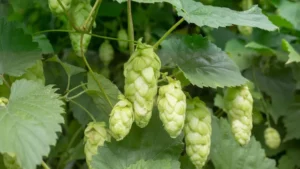
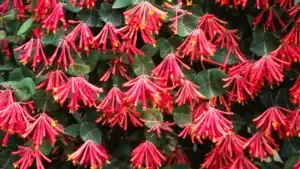


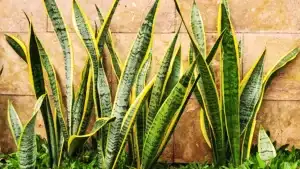




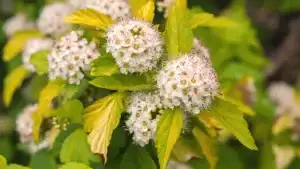
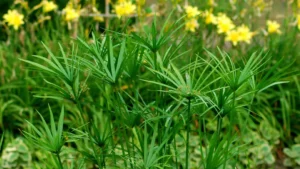

Leave your comment